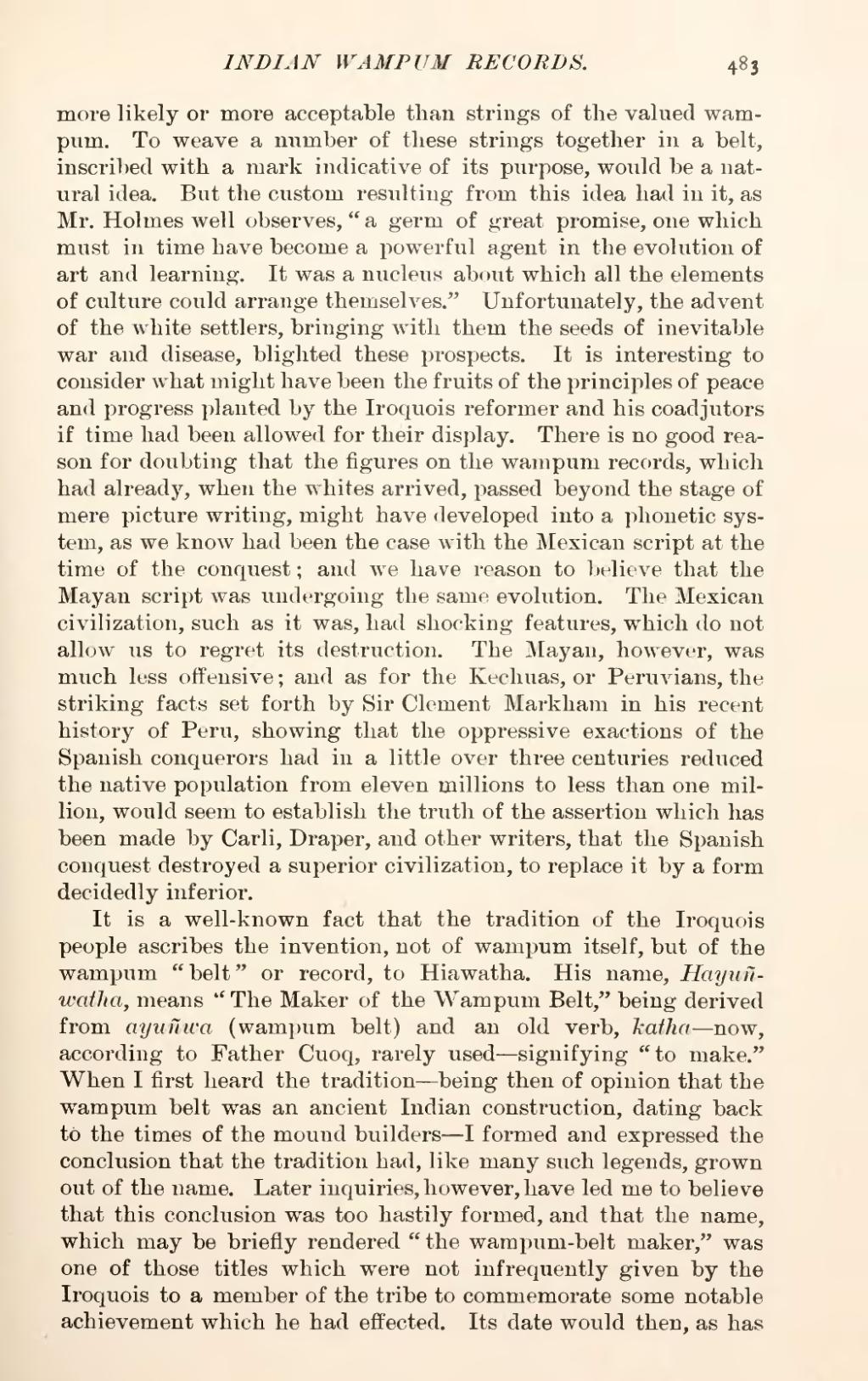more likely or more acceptable than strings of the valued wampum. To weave a number of these strings together in a belt, inscribed with a mark indicative of its purpose, would be a natural idea. But the custom resulting from this idea had in it, as Mr. Holmes well observes, "a germ of great promise, one which must in time have become a powerful agent in the evolution of art and learning. It was a nucleus about which all the elements of culture could arrange themselves." Unfortunately, the advent of the white settlers, bringing with them the seeds of inevitable war and disease, blighted these prospects. It is interesting to consider what might have been the fruits of the principles of peace and progress planted by the Iroquois reformer and his coadjutors if time had been allowed for their display. There is no good reason for doubting that the figures on the wampum records, which had already, when the whites arrived, passed beyond the stage of mere picture writing, might have developed into a phonetic system, as we know had been the case with the Mexican script at the time of the conquest; and we have reason to believe that the Mayan script was undergoing the same evolution. The Mexican civilization, such as it was, had shocking features, which do not allow us to regret its destruction. The Mayan, however, was much less offensive; and as for the Kechuas, or Peruvians, the striking facts set forth by Sir Clement Markham in his recent history of Peru, showing that the oppressive exactions of the Spanish conquerors had in a little over three centuries reduced the native population from eleven millions to less than one million, would seem to establish the truth of the assertion which has been made by Carli, Draper, and other writers, that the Spanish conquest destroyed a superior civilization, to replace it by a form decidedly inferior.
It is a well-known fact that the tradition of the Iroquois people ascribes the invention, not of wampum itself, but of the wampum "belt" or record, to Hiawatha. His name, Hayunwatha, means "The Maker of the Wampum Belt," being derived from ayunwa (wampum belt) and an old verb, katha—now, according to Father Cuoq, rarely used—signifying "to make." When I first heard the tradition—being then of opinion that the wampum belt was an ancient Indian construction, dating back to the times of the mound builders—I formed and expressed the conclusion that the tradition had, like many such legends, grown out of the name. Later inquiries, however, have led me to believe that this conclusion was too hastily formed, and that the name, which may be briefly rendered "the wampum-belt maker," was one of those titles which were not infrequently given by the Iroquois to a member of the tribe to commemorate some notable achievement which he had effected. Its date would then, as has
